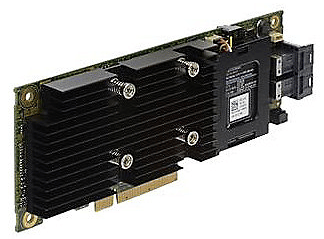The acronym RAID stands for redundant array of independent disks. A RAID system may be hardware or software, and virtualizes physical storage drives to improve performance and create data redundancy. Controller-based RAID generally refers to hardware-based RAID, as opposed to server-based RAID, which is both software-defined and software-hardware hybrids. What is a RAID Controller? A […]


The acronym RAID stands for redundant array of independent disks. A RAID system may be hardware or software, and virtualizes physical storage drives to improve performance and create data redundancy. Controller-based RAID generally refers to hardware-based RAID, as opposed to server-based RAID, which is both software-defined and software-hardware hybrids.
A RAID controller is a card or chip located between the operating system and the storage drives, usually hard disk drives. RAID provides data redundancy and/or improves hard disk drive performance; most RAID levels do both. RAID does provide redundancy on SSDs, but does not improve SSD performance. RAID manufactured specifically for SSDs will provide both redundancy and improve performance.
RAID controllers work by virtualizing the drives into distinct groups with specific data protection and redundancy characteristics. The front-end interface communicates with the server, usually via a host-based adapter (HBA); and the backend communicates with and manages the underlying storage media; usually ATA, SCSI, SATA, SAS, or Fibre Channel.
RAID controllers are classified by multiple characteristics including drive types such as SATA or SAS, the number of ports and number of drives it can support, specific RAID levels, interface architecture, and how much memory exists in native cache. For example, this means that a controller manufactured for a SATA environment will not work on a SAS array, and that a RAID 1 controller cannot be modified into a RAID 10.
RAID controllers are not storage controllers. Storage controllers presents active disks to the OS, while the RAID controller acts as a RAM cache and provides RAID functionality. The number and identity of RAID disks depends on a RAID controller’s configuration.

The Dell EMC PERC H739P RAID controller is an enterprise-grade RAID unit.
Dedicated hardware controllers come in two different architectures: an external RAID Controller Card and an internal RAID-on-Chip:
Software RAID delivers RAID services from the host. It comes in two flavors: software-defined hosted in the OS, and a hybrid architecture that contains a hardware component to relieve the load on the CPU.

The 3ware 9650SE SATA II RAID controller is a relatively inexpensive RAID unit.
See this in-depth discussion of RAID levels. Here’s a summary:
RAID controllers are specific to RAID levels. The most common levels are RAID 0, 1, 5/6, and 10. For more in-depth information, read RAID Levels.
RAID is a fundamental data protection and driver for HDD and SSD, and a performance driver for HDD. Top benefits include:
The controller architecture of hardware-based RAID is more expensive than software-based RAID, but increases system performance and is not subject to boot errors.
Not every environment makes sense for controller-based RAID. In a tightly budgeted storage environment, software-only RAID 0 will improve HDD performance and software-only RAID 1 will provide acceptable data redundancy.
However, in higher performance environments with compute-intensive arrays, hardware RAID 5/6 will provide better performance than software defined RAID. And if you need to scale-up to RAID 10, you will probably not find software-based alternatives.


Christine Taylor is a writer and content strategist. She brings technology concepts to vivid life in white papers, ebooks, case studies, blogs, and articles, and is particularly passionate about the explosive potential of B2B storytelling. She also consults with small marketing teams on how to do excellent content strategy and creation with limited resources.

Enterprise Storage Forum offers practical information on data storage and protection from several different perspectives: hardware, software, on-premises services and cloud services. It also includes storage security and deep looks into various storage technologies, including object storage and modern parallel file systems. ESF is an ideal website for enterprise storage admins, CTOs and storage architects to reference in order to stay informed about the latest products, services and trends in the storage industry.
Property of TechnologyAdvice. © 2025 TechnologyAdvice. All Rights Reserved
Advertiser Disclosure: Some of the products that appear on this site are from companies from which TechnologyAdvice receives compensation. This compensation may impact how and where products appear on this site including, for example, the order in which they appear. TechnologyAdvice does not include all companies or all types of products available in the marketplace.